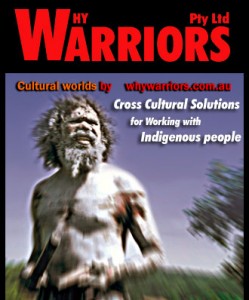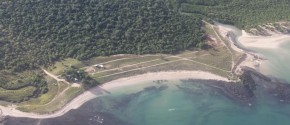The Federal Government has embarked on a process they call “Closing the Gap”. It recognises that there is a gap between the outcome for Indigenous people and rest of Australia in key social indicators. Indigenous people and their communities face poor health outcomes, poor job prospects and poor educational outcomes compared to the rest of Australia. As Australians attempt so help to rectify such social problems we must distinguish the symptoms from causes, and ultimately find a way to treat the cause/s. We cannot just assume that poor housing, or lack of teachers, or inadequate funding for services are the causes of these ‘Gaps.’ Let me illustrate the difference between symptom and cause using a parable.
Every day you find yourself standing at the bottom of a cliff. And every day you find that a car or bus has fallen over the cliff filled with people causing many people to be killed or injured. How should the city respond to this? First of all the people from the city send medics to treat the injured and get them to hospital and the families, priests and labourers come to bury the dead. But every day there is another lot of deaths. The city is so busy caring for the injured and the dead that it is some time before the city does anything to stop the carnage. Finally the city decides to put up a rail on the cliff to stop cars from falling over. This works for some time but soon the rail breaks from the pounding it receives and in addition to this you notice that the day the rail broke several vehicles tumbled over the edge with it. Someone who works in the mayors office came up with a great idea. If all the cars and buses had wings then they could glide safely over the edge. No body told the Mayor however that bus drivers don’t know how to fly a bus and the wings were a real problem for space on the roads. Soon the city has had enough they say well no one shall travel on the mountain any more. So they put up road blocks all along their side of the mountain and they tried to force those on the mountain to live in the city. This slows the carnage but as more people come to live in the city the problems starts to increase again. Still cars and buses fall over the edge. The city has forgotten that people have built their lives on the mountain and they have not looked carefully to see which road is killing people. Soon the people realise that it isn’t right that the citizens can’t travel to relatives or live on the mountain that has been home to people for centuries, because of one road. What can be done, how can this be resolved?
Standing at the bottom of this cliff you realise that the solution to the problem depends on what is happening on top of the cliff. Is it a dangerous corner up there? Do people get lost and the road leads them over the cliff? Are there bandits in bulldozers up there waiting to push people off? What might it be? You head off to get to the top.
Everything that happens from the edge of the cliff till the cars hit the ground are symptoms that there is something happening on top of that cliff which is the cause. The question that needs to be asked is ‘Why?’, but one’s perspective needs to change so that one can look beyond the carnage and the cliff to the causes happening above and out of sight in order to find the real answers.
The story ends like this.
When you search for and find the road that runs near that cliff, when you watch the cars to see who falls, when you talk to the drivers who use the road, ..then you realise that people only crash at particular times of the day. When you drive that road carefully, at those time you see that drivers are blinded by the sun that reflects from the city below at those times as they reach the crest. They cannot see the road as they come to the bend near the cliff.
On top of the cliff, the cause is not the mountain or the people on the mountain, or the cliff, or drivers, these are all just part of that place, the mostly immovable realities. In this story the cause of the carnage is the blinding of the drivers by reflected sun light, which is a result of the conditions created on that road by a combination of factors, the crest in the road, the corner near the cliff, the white roofs and windows of the city, the position of the sun in the sky.
There are a lot of analogies in this story with the history of programs and policies designed to help solve the problems being faced by Indigenous Australians over the years. Consider them if you will, but consider this now. If the fall from the cliff represents the gap in life expectancy, disease rates and the failures in education in Aboriginal communities, how do we look beyond the carnage and the patch up measures needed to treat the wounded to find the cause – that which is happening out of sight beyond the top of the cliff. For the problems found in Aboriginal Communities we must look carefully at what community members experience in common that leads to these problems. Furthermore, do these common experiences have other more foundational real causes which are not part of immovable realities. If there are deeper questions then we must ask again, ” Why are they experiencing this?” We must keep asking this ‘Why?’ until we get to the ultimate causes. Metaphorically, we climb the cliff and get beyond the carnage, by following a trail of ‘Whys?’. The other way to change our perspective from symptoms, to a view from the the top of the cliff, is to enter the world of those who face and experience these problems, not so much the wounded, but in particular we must communicate with the experts among the people themselves, the bus drivers trying guide the people safely along the mountain road. And we must test our answers, not adopt answers based on assumed realities. As you can see its not simple to look for causes and it is often easier to just treat the symptoms in the short term, but if that is all we do the carnage will continue and the ‘Gap’ will remain.
In the next part to this subject I will analyse some specific solutions offered by Government and consider what perspective they are using and why



